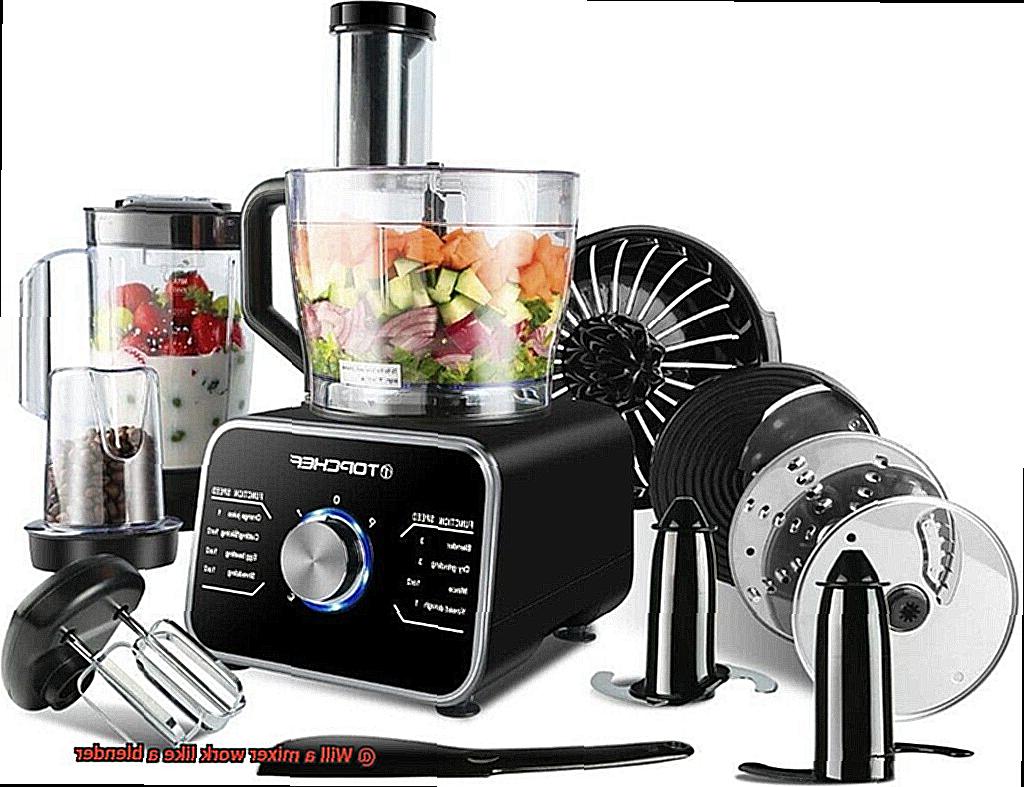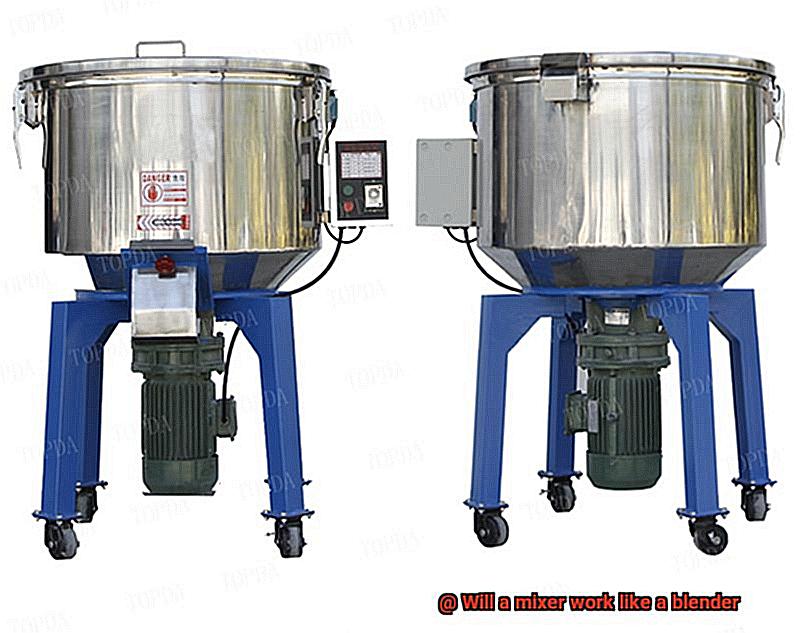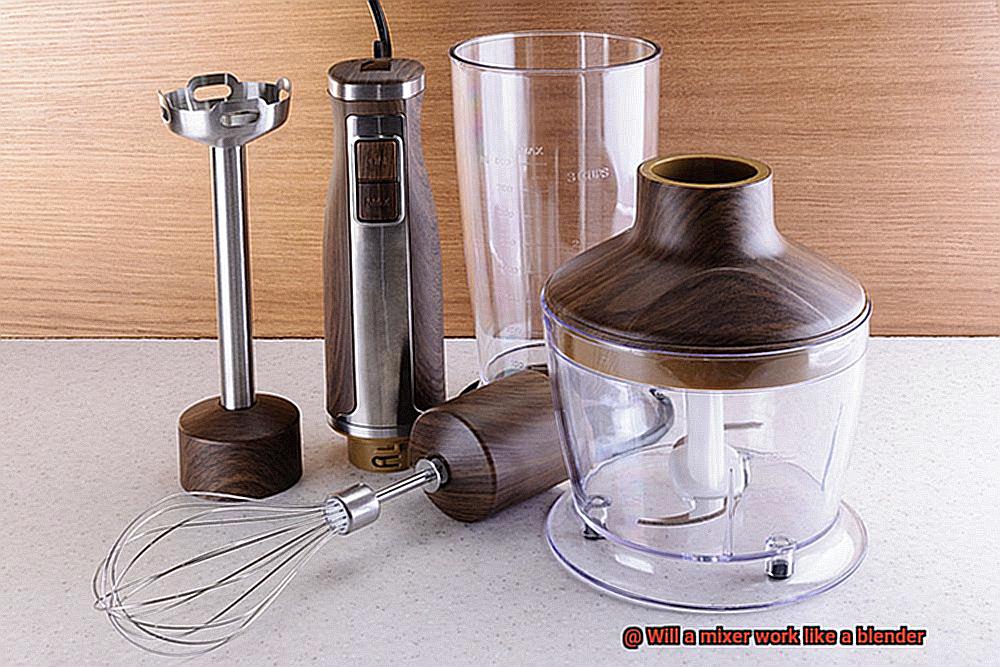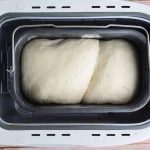Are you tired of using your blender for every food preparation task and wondering if a mixer could replace it? Well, the answer is not as simple as yes or no. Although mixers and blenders may look similar, they serve distinct purposes in the kitchen.
Both appliances have rotating blades and can be used to mix ingredients, but that’s where their similarities end. Mixers are ideal for combining and kneading ingredients, while blenders are designed to crush, puree, and emulsify. But can mixers work like blenders? Can they accomplish the same tasks?
In this article, we’ll explore the differences between mixers and blenders, clarify their purposes, and determine if mixers can replace blenders. We’ll delve into their functionalities, parts, and differences to help you understand which appliance is best suited for different recipes.
So let’s get started on answering the question: Will a mixer work like a blender? We’ll provide insights into the types of recipes that call for a mixer versus those that require a blender. By the end of this article, you’ll have a deeper understanding of these kitchen appliances that keep our meals delicious and nutritious.
Keep reading to discover more.
Contents
What Is a Mixer?
Mixers are an essential tool in any kitchen, whether you’re a seasoned chef or a beginner cook. These versatile appliances can save you time and effort by quickly mixing, beating, and whisking ingredients together to create the perfect consistency for your recipes. So what is a mixer, exactly?
Simply put, a mixer is a kitchen appliance designed to mix ingredients together evenly and efficiently. It comes with various attachments like dough hooks, beaters, and whisks that can be swapped out depending on the task at hand. Mixers are available in different types, including hand mixers and stand mixers.
Hand mixers are small appliances that are handheld and ideal for small batches of ingredients. They are lightweight and easy to use, making them perfect for those who don’t have a lot of counter space or who only need to mix small amounts of ingredients. Stand mixers, on the other hand, are larger appliances that sit on the countertop. They are more powerful and can handle larger batches of ingredients. Stand mixers are also more versatile than hand mixers as they come with a wide range of attachments.
Using a mixer is pretty straightforward. First, choose the appropriate attachment for the task at hand. For example, use the dough hook when making bread dough or the whisk when making whipped cream. Next, attach the chosen attachment to the mixer and make sure it’s secure. Then, add the ingredients to the mixing bowl and turn on the mixer. It’s important to start on a low speed to avoid splattering before gradually increasing it until you get the desired consistency.
It’s worth noting that while mixers are great for mixing ingredients evenly and efficiently, they are not designed to chop or puree solid foods like blenders do. If you want to make smoothies or purees, you’ll need a blender instead.
What Is a Blender?
Meet the blender – the powerhouse kitchen appliance designed to blend, chop, crush, and puree your ingredients to perfection. As an expert on the topic, let me share with you what makes this essential tool a must-have in every kitchen.
A blender typically consists of a motorized base unit with controls for speed and power, and a blending container made of glass or plastic. The container houses a blade assembly at the bottom that spins rapidly to chop and mix ingredients. From smoothies and milkshakes to soups, sauces, and dips, the blender is versatile enough to tackle any recipe.
But did you know that there are different types of blenders available? Countertop blenders are the most common type, with a large blending container that sits on the base unit. You can easily make large batches of your favorite recipes with ease. If you’re looking for something handheld and convenient, immersion blenders allow you to blend ingredients directly in a pot or bowl without needing to transfer them to another container. And for those who want something compact and easy to use, personal blenders come with individual serving cups for making smoothies and drinks.
Blenders are not just limited to certain ingredients either. They can handle a wide range of foods and liquids, including fruits, vegetables, ice, nuts, grains, and more. The blender’s powerful blades are designed to create a smooth and consistent texture by breaking down ingredients into small pieces.
The Differences Between a Mixer and a Blender
In fact, there are significant differences between the two that make them suitable for specific tasks.
Let’s start with mixers. These devices are perfect for bakers who love to blend and mix ingredients together. With multiple attachments like a whisk, paddle, and dough hook, mixers can handle different types of ingredients. They’re ideal for mixing thick batters or doughs that require a lot of power to combine. The powerful motor and sturdy construction of a mixer make it perfect for handling tough ingredients like bread dough or cookie dough.
Now let’s talk about blenders. These kitchen superheroes are designed primarily to puree or liquefy ingredients. With sharp blades that can easily blend and crush ice and frozen fruits or vegetables, blenders are perfect for making smoothies, soups, sauces, and other liquid-based recipes. However, they may not be suitable for thicker mixtures like dough or batter.
But it’s not just about the tasks they perform; it’s also about their structure. Mixers have a bowl-shaped attachment where ingredients gather while blending. The mixing attachments rotate around the edges of the bowl, ensuring even mixing. Blenders, on the other hand, have a tall jar-like structure with blades attached to the bottom. The ingredients are poured into the jar and blended by the rotating blades.
So, before you decide which is right for your recipe, it’s important to understand their differences. Mixing requires a lot of power and sturdy construction to handle tough ingredients like dough, while blending requires sharp blades and a tall structure to liquefy ingredients effectively. Here are some key takeaways:
MIXERS:
- Ideal for baking enthusiasts
- Multiple attachments for different types of ingredients
- Perfect for mixing thick batters or doughs
- Powerful motor and sturdy construction
BLENDERS:
- Ideal for making smoothies, soups, sauces, and other liquid-based recipes
- Sharp blades that can crush ice and frozen fruits or vegetables
- Not suitable for thicker mixtures like dough or batter
- Tall jar-like structure with blades attached to the bottom
Can a Mixer Work Like a Blender?
The answer is no. Although they may look similar, mixers and blenders serve different purposes and cannot be used interchangeably.

Mixers are designed to mix ingredients together, such as dough or batter. They have attachments like a whisk or paddle that move the ingredients around in the mixing bowl, ensuring everything is evenly mixed. They work by using a motor to turn the attachments in a circular motion.
On the other hand, blenders are designed to blend ingredients together into a smooth consistency, such as making smoothies or pureeing vegetables. They work by using blades to chop up ingredients and then blend them together into a smooth consistency.
The main difference between mixers and blenders is their blades. The blades in a mixer are not designed to chop up ingredients like a blender’s blades are. This can result in unevenly blended ingredients or even damage to the mixer itself.
When it comes to kitchen appliances, it’s important to use the appropriate machine for the task at hand. Trying to use a mixer in place of a blender is like trying to use a wrench instead of pliers; it just won’t work properly. So next time you’re whipping up something in the kitchen, make sure you have the right tool for the job.
Why You Need to Understand the Functions and Limitations of Each Tool
This is because these two appliances have very different functions and limitations that must be considered when choosing the right one for the job.
Let’s take a closer look at mixers and blenders. A mixer is primarily used for mixing ingredients together, such as for baking. It has various attachments that can be used to mix dough, beat egg whites, or whip cream. On the other hand, a blender is designed to blend ingredients together into a smooth consistency. It is commonly used for making smoothies, pureeing soups, or crushing ice.
While they may seem interchangeable, it’s important to understand the limitations of each tool. For instance, if you try to blend ingredients in a mixer, you may end up with an uneven texture or chunks that are not fully blended. Likewise, attempting to mix heavy dough in a blender can damage the blades or motor.
By understanding the functions and limitations of each tool, you can make an informed decision about which one is best for your specific needs. If you want to make a smoothie, a blender is the clear choice. If you need to mix ingredients for baking, a mixer is the way to go.

However, it’s not just about mixers and blenders. Every kitchen appliance has its own functions and limitations that should be taken into consideration when selecting the right tool. Here are some tips to keep in mind:
- Read the manual: The manual provides valuable information about your appliance’s functions and limitations.
- Research: Before purchasing an appliance, do some research online to find out what it can and cannot do.
- Consider your needs: Think about what you will be using the appliance for and choose one that is appropriate for those needs.
What Can You Do with a Mixer?
A mixer is one such tool that can help you achieve perfect results every time. It is a versatile kitchen appliance that can be used for various tasks, making it an essential item in any kitchen.
So, what can you do with a mixer? Let’s explore some of the tasks that this powerful tool can help you accomplish:
- Whipping cream: Whether you’re preparing a dessert or just want to add some whipped cream to your hot chocolate, a mixer is perfect for whipping cream quickly and easily. With the whisk attachment, you can whip cream until it forms stiff peaks.
- Mixing batter: Making pancakes, muffins, or cakes by hand can be time-consuming and tiring. With a mixer, you can mix everything together quickly and evenly. Simply attach the paddle attachment and let it do the work for you.
- Kneading dough: The thought of making bread dough by hand might make you break out in sweat. But with a mixer, kneading dough becomes effortless and takes just a few minutes. The dough hook attachment makes this task easy.
- Creaming butter and sugar: Creaming butter and sugar together is an important step in many baking recipes as it helps to achieve the right texture in your baked goods. A mixer makes this task quick and easy. Just attach the paddle attachment and let it do the work for you.
- Blending smoothies: While a blender may be the go-to tool for blending smoothies, a mixer can also be used for this task. Just add your ingredients to a tall container and use the immersion blender attachment to blend everything together.
These are just a few examples of what you can do with a mixer in your kitchen. From beating eggs to making mashed potatoes, there are countless tasks that a mixer can make easier for you.
What Can You Do with a Blender?
You’re in for a treat because blenders are not just a one-trick pony. They can do so much more than just blend fruits and veggies. Get ready to explore the endless possibilities of what you can do with a blender.
Of course, the most common use for blenders is to make smoothies, soups, sauces, and dips. But did you know that you can also grind coffee beans for that perfect cup of coffee? With a powerful blender, you can even crush ice to make refreshing frozen drinks. And don’t forget about chopping vegetables – it’s a breeze with a high-speed blender.
But wait, there’s more. Blenders can also be used for non-food tasks. Are you looking for natural skincare products? Your blender can help you create homemade face masks and scrubs using ingredients like avocado and honey. And if you’re into DIY cleaning products, simply blend vinegar, lemon juice, and baking soda to make an all-purpose cleaner.
Blenders come in different shapes and sizes with various features that cater to different needs. Some blenders have multiple speed settings, making them perfect for tougher ingredients like ice and frozen fruit. Others are designed for smaller tasks and have less powerful motors.
PheGoR-3bKA” >
Conclusion
In summary, the question of whether a mixer can substitute for a blender has been resolved. Although they may appear similar at first glance, mixers and blenders have distinct roles in the kitchen. Mixers are perfect for combining and kneading ingredients, while blenders excel at crushing, pureeing, and emulsifying.
When it comes to mixers, there are various types available such as hand mixers and stand mixers with interchangeable attachments like dough hooks, beaters, and whisks. These tools are ideal for bakers who enjoy blending and mixing ingredients together.
Blenders, on the other hand, have sharp blades that easily crush ice and frozen fruits or vegetables to create smoothies, soups, sauces, and other liquid-based recipes. They’re specifically designed to liquefy or puree ingredients.
It’s important to keep in mind that each appliance has its own unique functions and limitations that should be taken into account when choosing which one to use. By understanding their capabilities and differences, you can make an informed decision about which tool is best suited for your specific recipe needs.






